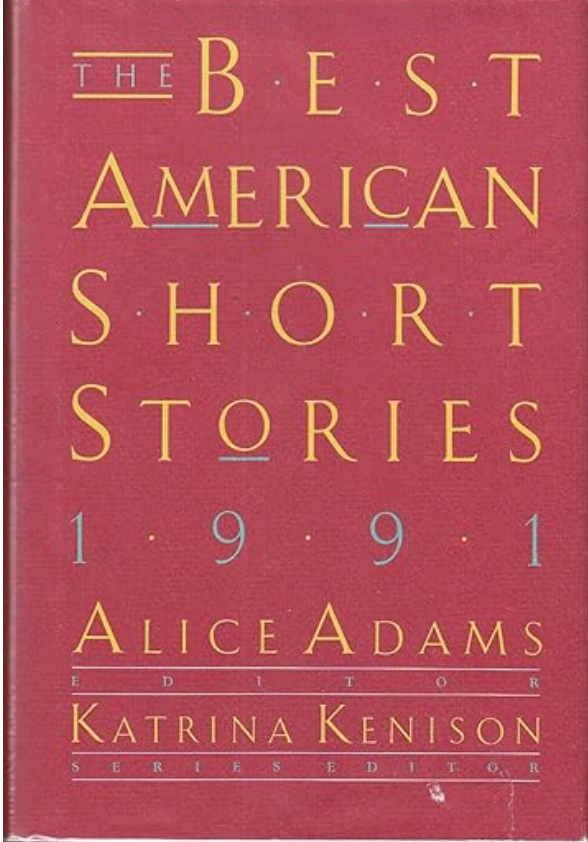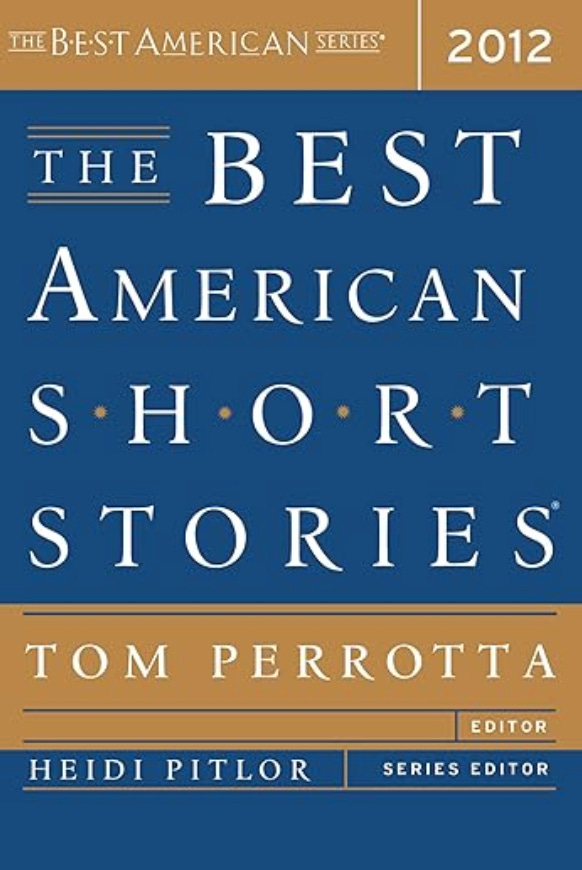A Conversation with Angela Pneuman: Novelist, Stegner Fellow, Napa Valley Writers Conference Director
"There’s a helpful relationship between teaching and my approaches to my own work. And it’s always gratifying to be in conversation with people who love to read and want to write."
Monthly and annual subscriptions are 25% off this month. A preview of July’s agent list can be accessed here.
Many years ago, when the U.S. president from Arkansas was still in his first term, I met today’s interviewee, Angela Pneuman. We were graduate creative writing students in Bloomington, Indiana, and the first time I heard her read from one of her stories, it was obvious that she had a tremendous amount of talent.
I remember one afternoon in Ballantine Hall on Indiana’s storied campus—among other notable facts, Breaking Away is set there and was written by IU alumnus and Academy Award winner Steve Tesich—when I nosily asked her how many stories she’d published. I thought she deserved to publish everything she’d written.
At that point, it was three stories—a considerable number for any MFA student. In this pre-Submittable era, every submission was photocopied and sent laboriously through the USPS (and in the 1990s, there were many fewer literary journals than today).
It didn’t surprise me that a year or so after graduating from IU, her work was selected for a prestigious Indiana state arts grant, and shortly thereafter, she left for Stanford University, where she became a Stegner fellow, which is arguably the most distinguished fellowship for emerging writers.
A few years later, one of her stories, “All Saints Day,” was selected by Lorrie Moore and Katrina Kenison for inclusion in The Best American Short Stories 2004. It’s as terrific story, which you can also find in her collection Home Remedies. She is likewise the author of a novel, Lay It on My Heart.
As a longtime admirer of Angela’s work, I was so pleased she was able to find the time to answer a few questions about her writing trajectory. As is apparent from the interview below, her days aren’t long on leisure.
—
Bookish/Christine: You've been in The Best American Short Stories anthology twice (2004 & 2012). Did these inclusions change your life, or some aspect of your perspective on the writing life and your work?
Angela Pneuman: The Best American Short Stories changed my life a long time before I was included. My college offered a single course in creative writing, taught by a poet, and she assigned Best American Short Stories 1991. This was a religious college—for all intents and purposes an evangelical bible college—and much of my focus had been on work published before 1960.
As if pre-1960 were a simpler time and not just—arguably?—a less-explicit time. It wasn’t the professors’ faults—there were some brilliant teachers who had to operate under the pressure to be careful of their selections; they did a great job within a narrow band of permissibility. The Friday night movies in the student center were often Hitchcock, for the same apparent reason. One really can be educated anywhere, in spite of many things!
Best American Short Stories 1991 was the one with “Tall Tales from the Mekong Delta” (Kate Braverman), “Friend of My Youth” (Alice Munro)—and so many more. My very first exposure to contemporary short stories. I would skip a day of classes, get in my car—my great uncle had sold me an ancient Ford Falcon, three-on-the-tree, for $500—and lurch my way over the road between my rural town and Lexington. I didn’t have check-out privileges at the University of Kentucky library, so I would find whole books by the authors included in Best American Short Stories 1991 and sit on the floor in the stacks and read them straight through. Alice Munro’s first collection, Dance of the Happy Shades, Braverman’s Lithium for Medea, etc.
At that time I thought I was going to be a painter—where I got the idea I could be any sort of full-time artist, I don’t know. Probably from reading things written before 1960. My mom, a teacher, said I could major in anything as long as I also got a teaching degree, which I did, and her plan was that I could live with her after college, teach school, and pay back my student loans. I was probably expected to marry a minister, like every other woman in my family for generations.
I never expected to be published anywhere, far less to be included in Best American Short Stories. By 2004, my life had changed a lot—I was living alone across the country, in the Tenderloin of San Francisco. All I remember was a weird sort of vertiginous feeling when I got the email that “All Saints Day” had been picked for the anthology.
It was entirely out of the blue, and when it sunk in I got a little boost of desperately needed confidence (like shots of B12 that eventually wear off; one needs another). What it probably did for me, practically, was help sell my first book. It was a huge honor—I feel incredibly grateful to Katrina Kenison and Lorrie Moore. And to
and Tom Perotta for the second inclusion. I’m still building a collection around “Occupational Hazard.” I am a very slow writer. It takes forever for me to figure out the logic of a story.CS: You teach for Stanford and also write for the wine industry. How do you balance your own fiction-writing with these other demands on your time?
AP: Not as well as I should. But I will say that with the teaching in Stanford Continuing Studies I’ve been able to create my own classes, to teach stories and novels I love and continue to discover, and to investigate the strategies of writers and work I admire. So there’s a helpful relationship between teaching and my approaches to my own work. And it’s always gratifying to be in conversation with people who love to read and want to write. The wine writing comes with its own perks, including living somewhere beautiful. I continue to work on strategies for getting my own work done—page counts, word counts, multiple projects at once all seem to help inch me forward. But again, I write very slowly.
CS: You were a Stegner fellow—arguably the most esteemed fellowship available to writers who haven't yet traditionally published a book—shortly after you finished your MFA degree at Indiana University. Would you discuss how this experience informed the writing you did past-graduate school?
AP: Looking back, I understand that it was shortly after Indiana—where I met you!—but the intervening couple of years felt like forever. I had a series of full-time jobs: legal secretary, political grunt, entry level public relations in wine, and I’d get up each morning and write before heading into work. I was working the wine job, having just moved to California, when I got the Stegner news.
I’d applied for the fellowship before I got that job, at a particularly low point when I had less than the application fee ($40) in my checking account. I had to take a cash advance from a credit card and deposit it to my bank account to write the application check. I figured it was money I would never see again. Many years later, I shared that story with the peerless Eavan Boland, that legendary supporter of fledgling writers whom we lost recently. She told me I should have called the department and they would have waived the fee.
I found the Stegner workshop to be very supportive. In our cohort, we were friends with each other and read each other’s work with excitement, interest, and motivation. And to study deeply with Tobias Wolff, John L’Heureux (another recent, inconceivable loss), and Elizabeth Tallent was a privilege. Several from my cohort remain my closest friends to this day.
CS: You're the director of the Napa Valley Writers Conference. How did you get involved with it and what are the challenges and pleasures of doing this work?
AP: The pleasures are in giving back, at least a little, to a world that has been so kind to me. It’s also a pleasure to invite my students from Stanford to apply and to get to share the week with them. The fiction director and I are able to bring in writers whose work we admire to teach our workshops, and I get to involve my friends in the Napa Valley community, who generously donate funds, wine, and sometimes their spare rooms to host participants during the week.
It’s also rewarding to understand that many of our participants take one of their only weeks in the year off work to come to the conference—it means a lot to them to have a whole week to focus on their writing. That’s highly motivating for the staff and me. We’re all writers, but in preparing for this week we’re committed to facilitating a valuable experience for other writers. Lots of people have, at this point, done that for me, and I appreciate the opportunity to pay it forward.
The challenges are that it’s time-consuming work. Basically it’s event planning like I used to do when I worked in public relations in the wine industry, only the event lasts seven days with multiple meals! It can also be difficult to communicate where a craft-focused literary conference belongs among a general readership like the Napa community. Poetry, for example, does not always seem accessible from the outside. We’re always working to find new ways to make what we do at the conference relevant to local readers and writers.
CS: What are you working on now if you don't mind sharing a few words about it?
AP: I’m working simultaneously, and slowly, on a collection of short stories and a novel, and considering whether or not the short stories also loosely form a novel or linked collection. The novel is inspired—and departs from—a real crime, but I’m not sure it fully belongs in a genre; it sort of borrows from a genre, structurally and otherwise?
I think of the stories as geographical satellites (of Kentucky); far-flung characters and events with a connection to a town I’ve written about before, but sometimes the connections are gossamer thin—the way, when you read Joan Silber, a connection between stories shows up just once, and so fleetingly you could miss it if you weren’t paying attention (I love Joan Silber). I also am a huge fan of your novel-in-stories, Little Known Facts, with its closer relationships between chapters. It’s a fantastic book and I’ve taught it in a couple Stanford Continuing Studies classes!









Fellow IU grad here to say what inspirational work by you two! Bloomington, Indiana is a special place. As a high school English teacher, I love hearing stories of authors who continue to hone their craft and create! ❤️
It's always interesting to see how much paths have changed in recent years. Good on Angela for giving back to new writers so much.